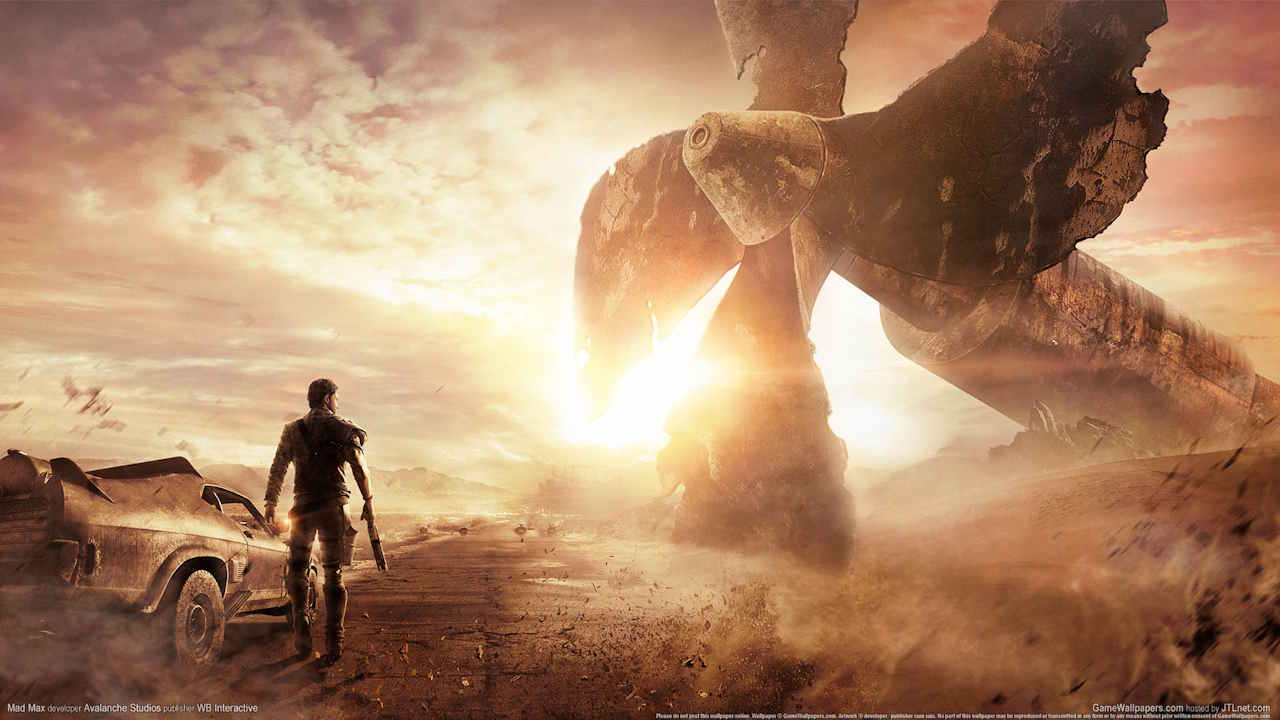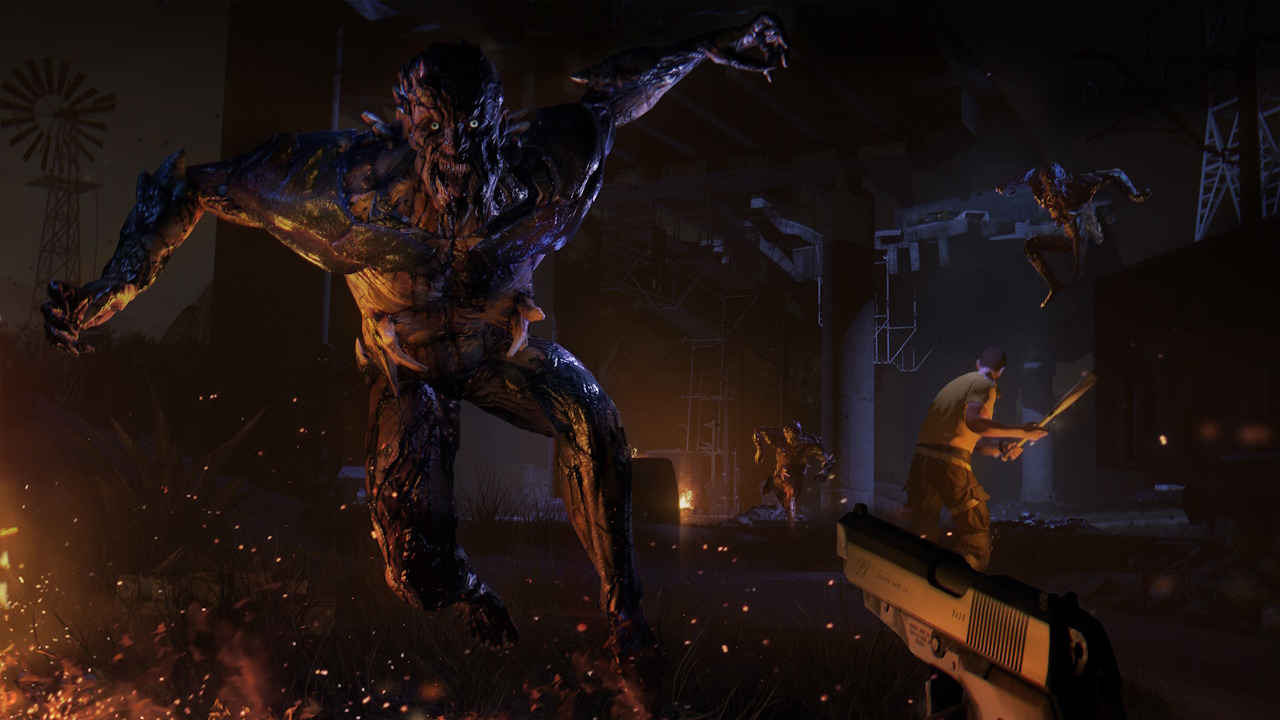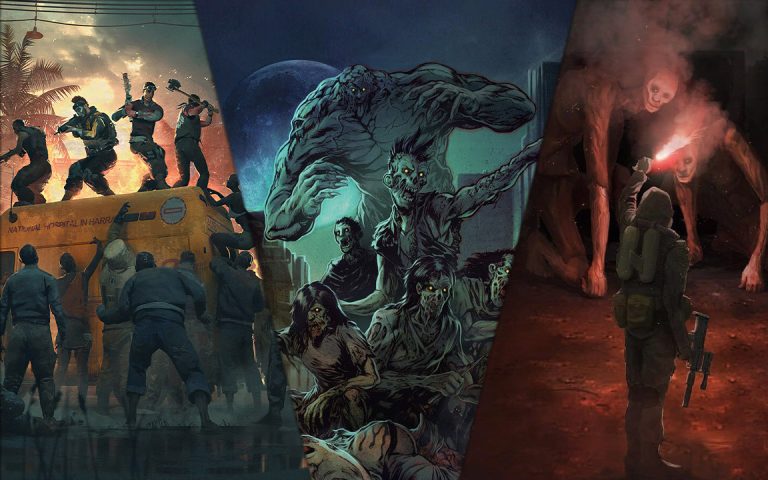By Arman Zarmehr
In this article, we are going to take a look at some of the different post-apocalyptic worlds in video games where survival may be difficult.
Throughout the history of the gaming industry, we’ve seen widespread catastrophes depicted in different video games, some of which ultimately led to the destruction of their worlds, while others portrayed isolated scenarios where you, as the player, were at the center. Some of these post-apocalyptic scenarios revolve around zombies, others focus on specific creatures and monsters, and still, others are entirely centered around humans. As a result, various dynamics of “apocalypse” have been portrayed in different video games to date.
Today, we aim to examine some of the most dangerous and terrifying aspects of these scenarios and see in which of them survival is the most challenging. It is worth mentioning that in this article, we consider The Walking Dead world as having the lowest survival difficulty level, with slower Walkers and a relatively cohesive environment with multiple survival potentials.
Mad Max

Mad Max and the world it depicts might be among the few “plausible” cases that could truly occur in future centuries. In this world, the Earth is nothing but a dusty ball riddled with scorching deserts and droughts, and the survivors living in this world have almost entirely forgotten “humanity” in some way.
In this world, oil and gasoline are valued more than gold because unlike many other apocalyptic worlds, in this one, vehicles play a prominent role in the survivors’ lives, and for some, they are even a means of livelihood and income. The dire situation of the Mad Max world is the result of an extensive atomic war, but even before that, this world was grappling with resource scarcity, where the atomic bomb was merely the final nail in its coffin. In line with this issue, humans gradually embraced widespread savagery and the drive towards lawlessness, laying the groundwork for what ultimately characterizes this post-apocalyptic world.
We witness numerous savage bandit groups in this world, roaming the deserts in caravans of heavy machinery and various rides. The major reasons I personally find survival in this post-apocalyptic world extremely difficult are drought, severe water scarcity, extreme heat, and ultimately, the presence of human threats who possess intelligence and sometimes have highly disturbed mental states, making the situation grim.
Considering these factors, the things that could lead to your demise are much more abundant than in a zombie-infested post-apocalyptic world; in this world, your enemies not only have the ability to think and fight but are also profoundly psychological and uncontrollable. Nonetheless, even if you can resist against this, there is a high probability that you will perish due to extreme heat or thirst.
The Last of Us

If we consider The Walking Dead to be the most realistic and, so to speak, a “Grounded” portrayal of a post-apocalyptic world, The Last of Us probably takes the next spot, although with a slight gap. The parasite utilized in this work to justify its world’s events is a real fungus called Cordyceps, which affects the brains of insects in our world.
The twist that The Last of Us gives to Cordyceps is that this parasite has the ability to enter the body through the air or food and directly affect the victim’s brain, and these victims, instead of insects, are humans! As a result, infected individuals slowly grow and ultimately give rise to Clickers, depicted in various stages of infection. For example, Runners mostly resemble humanoid figures because a significant amount of time has passed since their exposure to Cordyceps.
It’s also interesting to note that based on research conducted on Cordyceps in the real world, scientists have concluded that when an ant is infected by this fungus, it’s essentially like a machine with the fungus sitting in the driver’s seat, steering its body.
This issue is somewhat portrayed in The Last of Us series, and in fact, it can be said that the infected individuals, especially Runners and Stalkers, are still somewhat aware and try to resist the control of their bodies by this parasite. In essence, they are aware of what’s happening but have no control over their actions, and over time, the level of control exerted by Cordyceps on the host increases, diminishing their awareness, and ultimately fading away.
Ultimately, a fungus capable of airborne transmission and creatures sensitive to sound can significantly complicate survival in this world. But do you know what’s worse? It’s being newly infected, just beginning your ordeal in this world!
Metro

After traversing the scorching deserts of Mad Max’s world, it seems we should venture into the frigid wastelands of post-apocalyptic Russia with the Metro franchise. The world of this franchise was also ravaged by extensive atomic wars in 2013, resulting in billions of casualties, and now you’re one of the few survivors left on this earthly sphere in the country of Russia. As the name suggests, survivors in this world took refuge in the underground metro system of Moscow, Russia, and a significant portion of both Metro Last Light and Metro 2033 narrates within these dark tunnels.
While humans survive underground with extremely limited food supplies, the surface of the Earth and a vast part of Russia have been plunged into radioactivity, and the atmospheric conditions are such that survival in some areas without a mask and anti-radiation gear is impossible! If this alone doesn’t pose a significant challenge for survival in this world, we witness numerous mutated creatures such as rats, bears, and more, turned into bizarre and ferocious beasts under the influence of radiation.
In addition to these challenges, we still see conflicts among humans over different ideologies; two groups, the Stalinists and Nazis, are constantly arguing and fighting, while many survivors in the underground tunnels are killed by raiders and bandits, and their limited belongings are looted.
The world of Metro is not only one of the most captivating post-apocalyptic worlds, but it’s also considered one of the most challenging for survival because not only are you trapped in underground tunnels, contending with humans through wars and struggles and various mutated creatures, but if you ever reach the surface, you’ll have to deal with all these challenges in extreme cold and a radioactive environment. Therefore, almost every factor in this world can threaten your life in some way.
Dying Light

The world of Dying Light, regardless of which installment we’re discussing, is intensely hostile and horrifying. While it may not necessarily have numerous threats that directly threaten your survival, there’s a central and significant threat that can sometimes “quickly” catch survivors off guard, and that’s the Harran virus! This virus, initially depicted as concentrated in the city of Harran in the first installment, vividly showed in that game how dangerous and aggressive the monsters it creates can be.
Personally, I believe the original game, despite its spatial limitations and scale, portrays a much more horrifying aspect of the Harran virus, and the mechanism of the creatures in this world during the night is something that likely sends shivers down the spines of everyone who experienced it, hence the developers’ slogan for this game was “Good Night, Good Luck.” In the first installment, we saw that the outbreak was confined to the city of Harran, but during the second installment, we realized that the GRE organization was seeking to weaponize this virus, and through multiple experiments, a strain of this virus leaked out, engulfing the entirety of the Earth’s population.
This event led to the death of approximately 98% of the Earth’s population, and now, a limited group of survivors must contend with the shell of the dead. The mechanism of the zombies infected with this virus is such that during the darkness of night, they exhibit much higher speed, aggression, and hostility. However, unlike a world like The Walking Dead, these are not the only zombies that have taken over this franchise’s world, as the Harran virus has unleashed a wide spectrum of mutated creatures upon the survivors to further diminish their chances of survival.
In the original game, during the night, we were confronted with creatures such as Volatiles, which were extremely fast, resilient, aggressive, and of course, terrifying. On the other hand, one of the issues that the initial title didn’t shy away from was depicting the extent of the devastation this virus inflicted upon its victims. Therefore, we witnessed the depiction of infected children in the form of Screamers who screamed when approached, attracting all nearby zombies towards you. Demolishers were gigantic creatures capable of easily crushing an ordinary human under their fists.
The second installment introduced many more types of mutated creatures, including Revenants, which had the ability to use acid, and this is just one instance of the numerous creatures in this world. So whether we look solely at the city of Harran in the first installment or consider the larger scale of the second part, in any case, thanks to the wide range of dangers instinctively seeking to tear you apart, survival in this world will not only be difficult but also incredibly terrifying.
Left 4 Dead

The Green Flu virus and its unique approach to its creatures turn the world of Left 4 Dead into an environment where survival seems truly impossible to me! L4D presents exactly the kind of scenarios that, if we take it out of the gaming context and try to approach it more realistically, survival in it would almost be reduced to zero.
First and foremost, one of the major differences in the mechanics of this franchise compared to most zombie-themed titles is its approach to its zombies; zombies are usually depicted as slow-moving undead who may not necessarily pose a threat and are relatively easy to avoid or eliminate for survivors; however, Left 4 Dead portrays these enemies in an extremely aggressive manner, where they suddenly rush towards you in great numbers and show much higher speed and power compared to a regular zombie.
It might even be better to use the term “infected” instead of “zombies,” because the massive wave of the dead in these games also appears more intelligent in terms of performance than a typical zombie, and even their movement patterns are somewhat strategic, and these “infected” by the Green Flu virus still behave very much like living humans physically and biologically because they still need sleep, food, and even water, and since two of these needs are not necessarily fulfilled except for food, they have a shorter lifespan than a regular zombie. A regular zombie in The Walking Dead universe has a lifespan of about three and a half years until its body generally decays and perishes, but the infected of the L4D world probably live on average between one and two months.
However, due to the high level of aggression and hostility of the creatures in this world, there is very little chance that survivors can survive beyond the initial two months of the Green Flu pandemic, and it is also worth mentioning that we witness various types of mutations in this world, which make it much more difficult.
Creatures like Spitters, who have the ability to spew acid at their victims, can bring a human down entirely with a successful shot; The Tank, as its name suggests, are massive mutated beings that can easily pass through various obstacles including brick walls and structures, and we even saw in these works that this mutated being can easily toss a car into the sky as if it were a mere toy, and these are just two examples of the wide spectrum of mutated beings in this world! No amount of ammunition and weapons from any angle can stop the vast horde of monsters in this world, and your death in this world is a definite matter that may happen sooner or later, but it has no mercy.
Final Thoughts
In conclusion, post-apocalyptic worlds, whether zombie centric or following other patterns, always present intriguing scenarios. If we analyze their mechanics, we can see to what extent the chances of survival are possible in each of these end-of-the-world environments. Today, we only talked about a few of these scenarios and attempted to find the reasons for the difficulty of survival in them by considering their different aspects. However, there are still many other worlds and scenarios that I personally look forward to discussing and analyzing in future installments of this series of articles.
Until then, tell us in the comments which of these post-apocalyptic worlds you believe offers the best chance of survival.



Comments